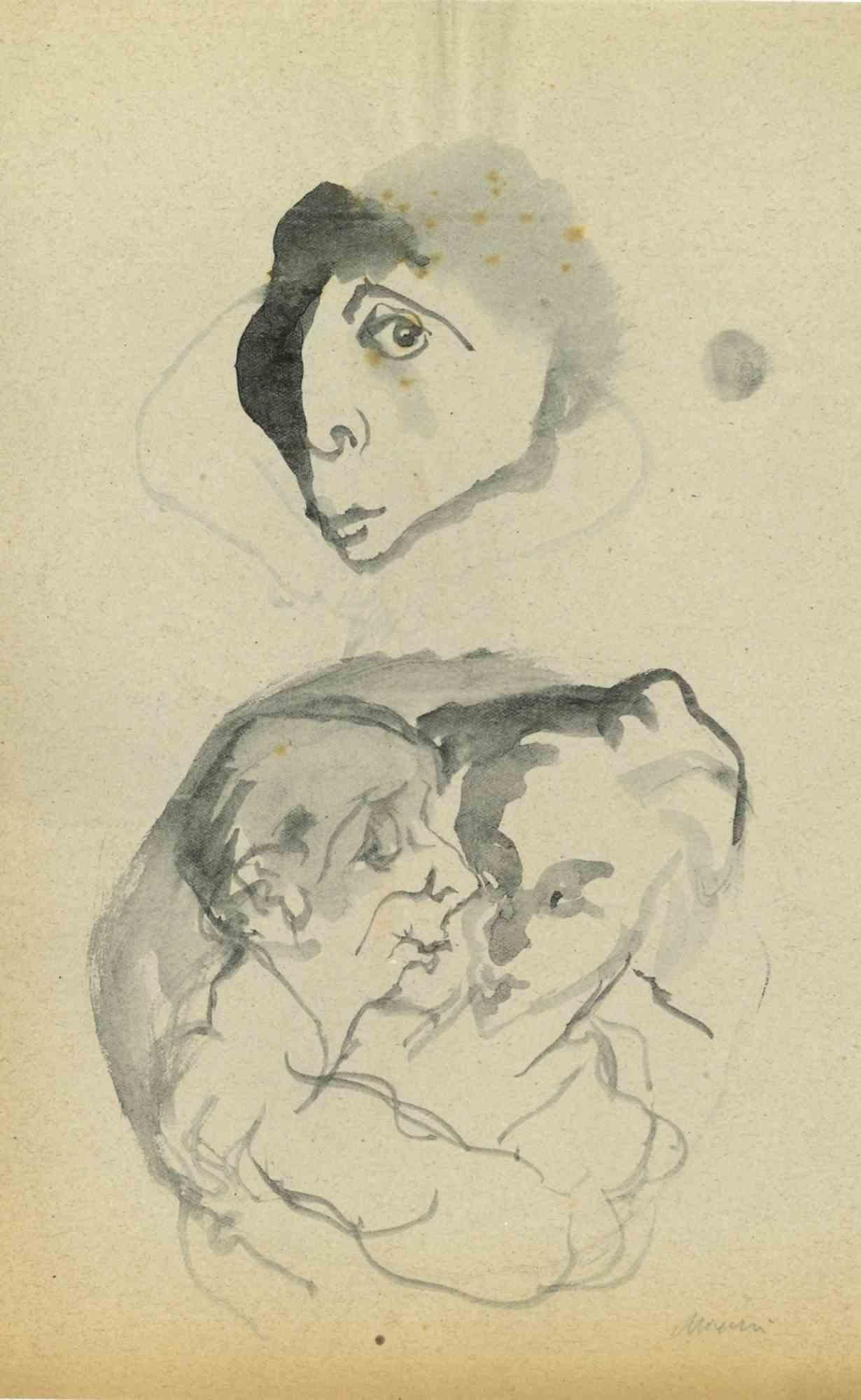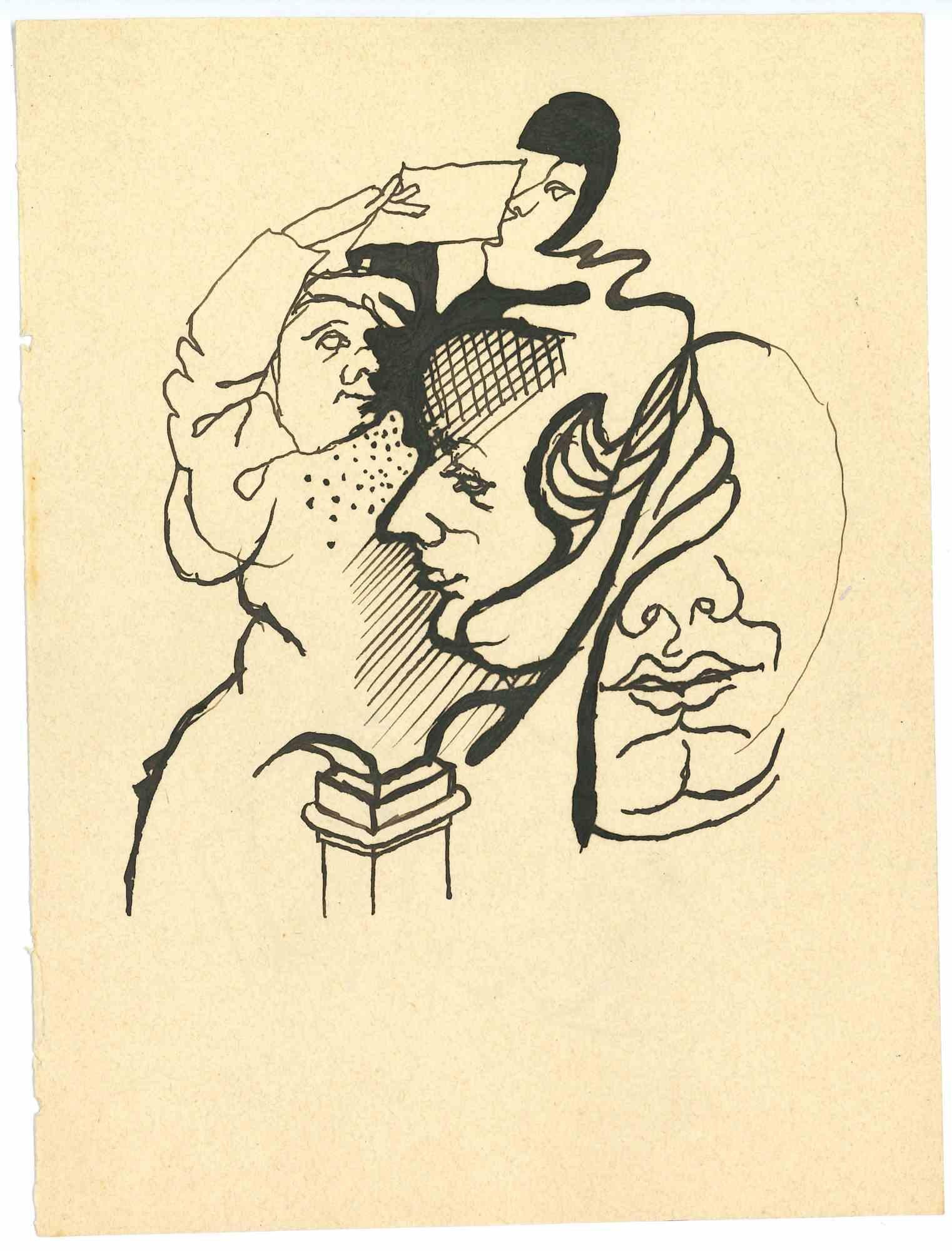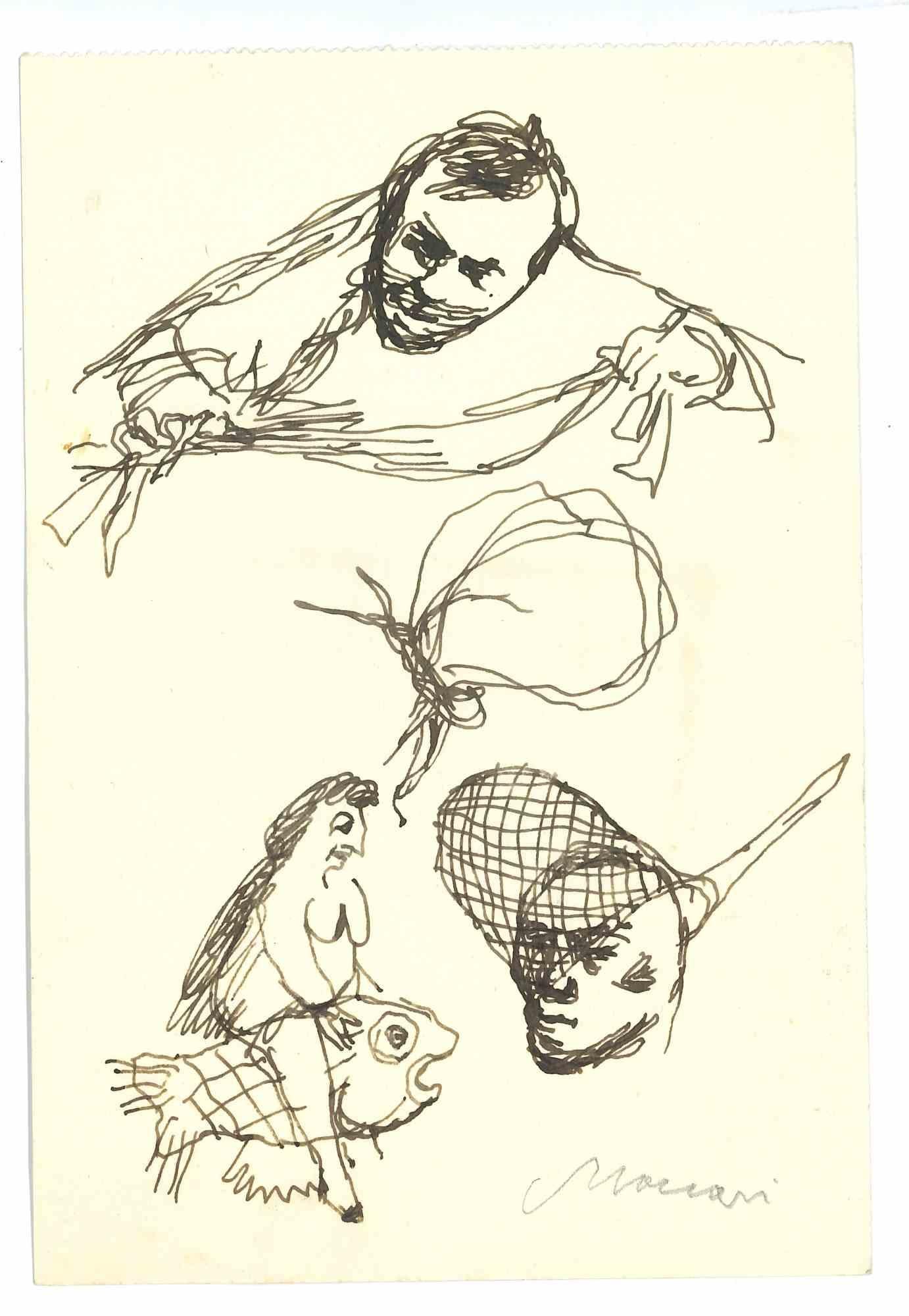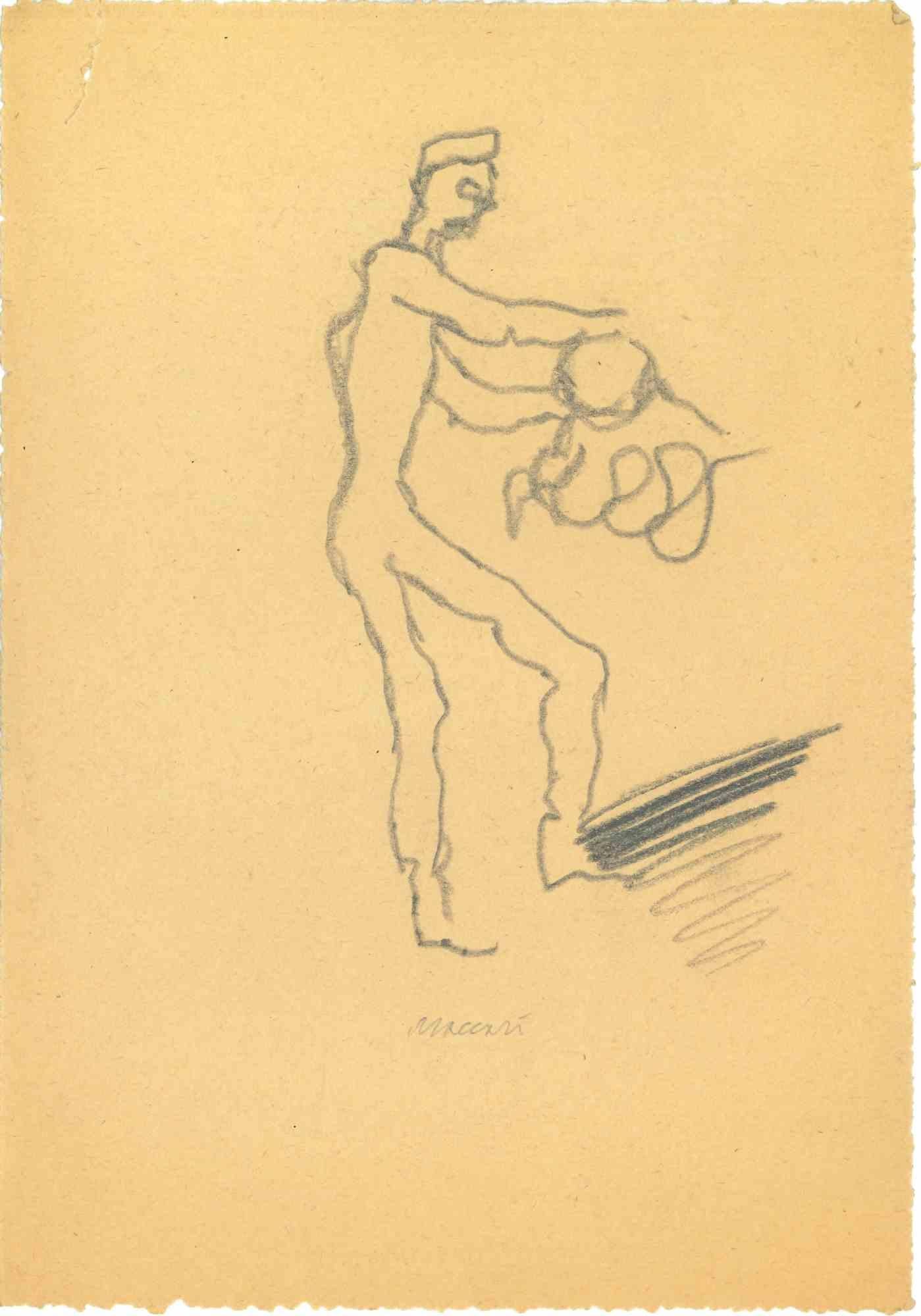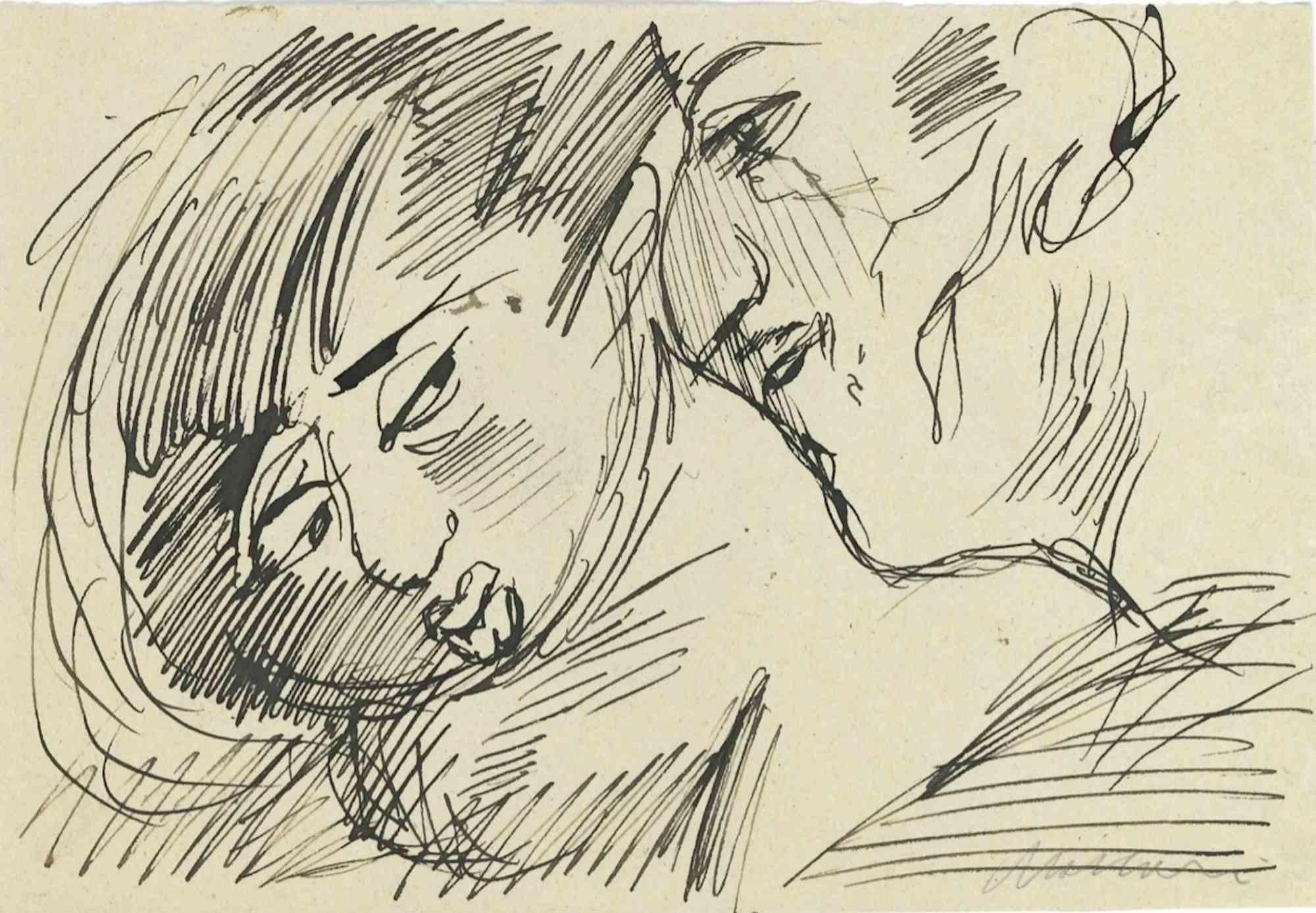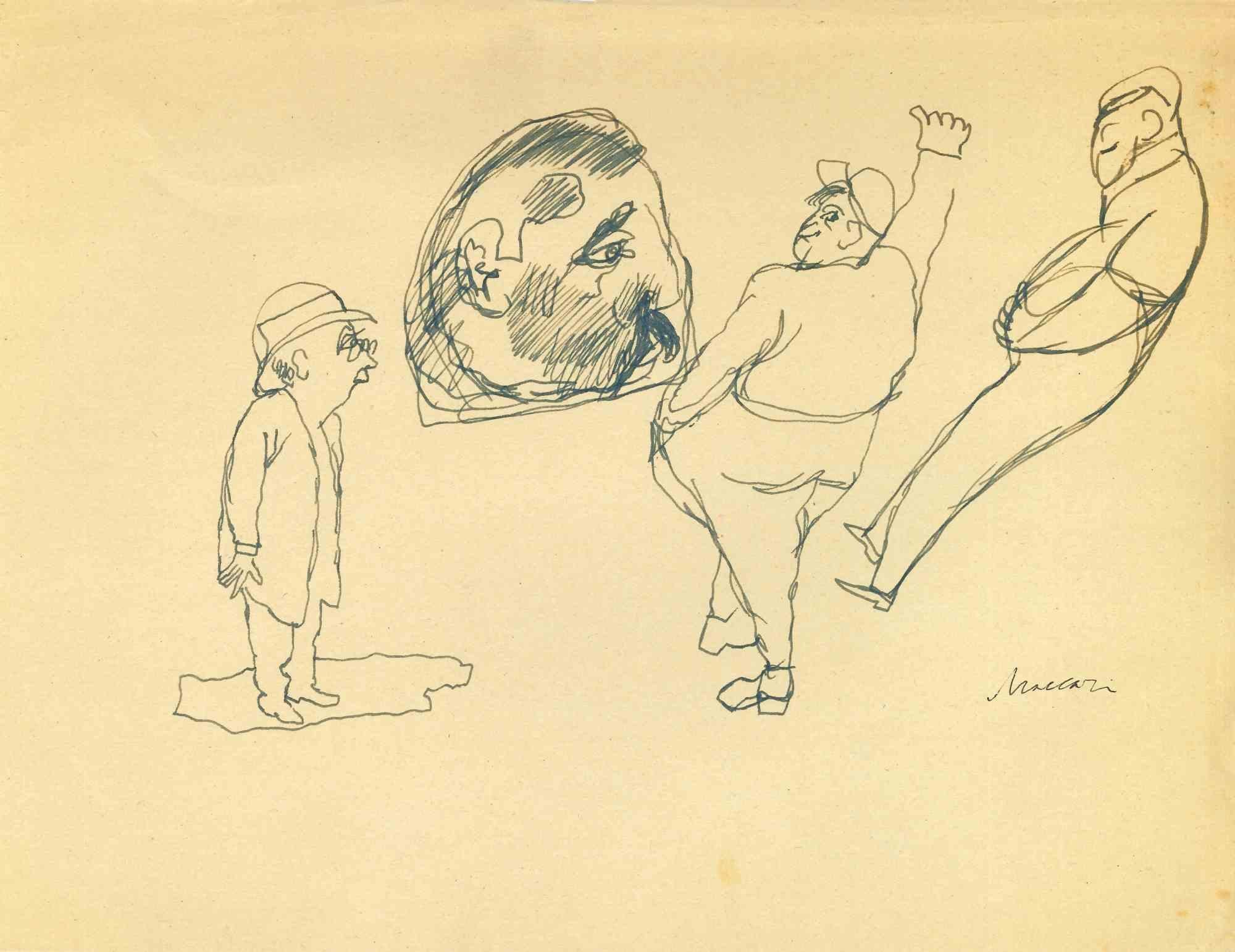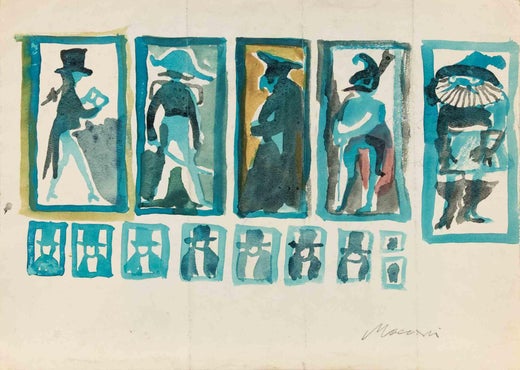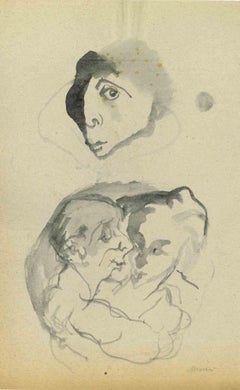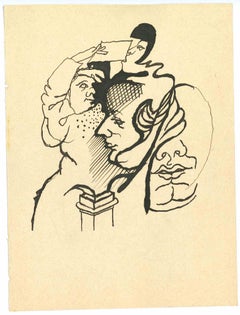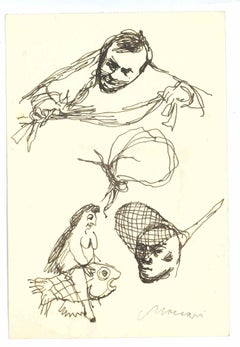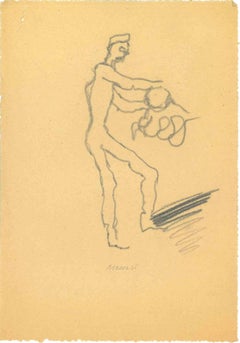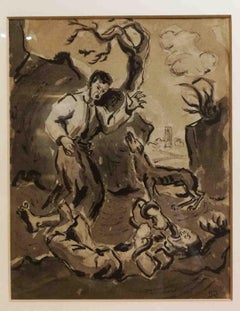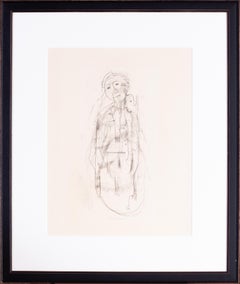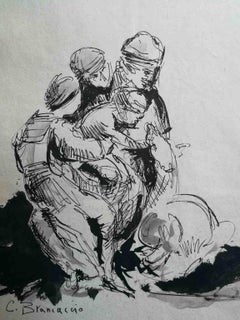Mino MaccariFlattery - Drawing by Mino Maccari - Mid-20th CenturyMid-20th Century
Mid-20th Century
About the Item
- Creator:Mino Maccari (1898 - 1989, Italian)
- Creation Year:Mid-20th Century
- Dimensions:Height: 8.27 in (21 cm)Width: 5.71 in (14.5 cm)Depth: 0.04 in (1 mm)
- Medium:
- Movement & Style:
- Period:
- Framing:Framing Options Available
- Condition:Insurance may be requested by customers as additional service, contact us for more information.a.
- Gallery Location:Roma, IT
- Reference Number:Seller: T-1410181stDibs: LU650312749422
Mino Maccari
Popular painter, engraver and journalist Mino Maccari is known for his often controversial and explosive prints, drawings and paintings, and is considered to be one of the most important Italian satirical artists of the 20th century.
Born in 1898 in Siena, Maccari joined the Italian Army at age 19 to serve in World War I as an artillery officer. Afterward, he attended law school, graduating in 1920 and working as a lawyer until 1926.
While working as a lawyer, Maccari developed an interest in painting and engraving, moonlighting as an artist. Despite his lack of formal training, his works captured the attention of local critics, and he debuted with the Group Labronico, an organization of like-minded Italian artists that included painter Beppe Guzzi.
In 1924, publisher Angiolo Bencini contacted Maccari to oversee the printing operations of Il Selvaggio, a fascist magazine in which Maccari’s first satirical illustrations and engravings appeared. Until 1942, Maccari was editor-in-chief of the controversial magazine, which featured contributions from Futurist artists such as Ardengo Soffici, Carlo Carrà and others.
Throughout his career, Maccari participated in numerous notable exhibitions and shows throughout Italy and Europe. His figurative drawings and paintings, portraits and exotic nude works gained considerable acclaim from critics and collaborative artists.
In 1927, he participated in the "Second International Exhibition of Modern Engraving" and the "Third Exhibition of the Tuscan Union of Arts." The following year, Maccari exhibited at the Venice Biennale, where he would win the International Prize for engraving in 1948.
From the late 1940s to 1963, Maccari collaborated with the liberal magazine Il Mondo, contributing several satirical illustrations and engravings. By this time, he had become a well-established and respected artist in Italy and, in 1959, was named director of the Academy of Fine Arts in Rome.
In 1963, Maccari was recognized again for his works, winning the Antonio Feltrinelli Prize for painting. That same year, he became president of the San Luca Academy.
Throughout the 1970s, Maccari continued painting and drawing, creating provocative works such as Dominatrix Woman, a bold work in watercolor and pastel, the diminutive pen drawing Trampled and his erotic charcoal and watercolor drawing Mata Hari.
Even after Maccari’s death in 1989, his works continue to be a talking point among avid modern art collectors.
Find original Mino Maccari drawings and watercolor paintings, prints and other art on 1stDibs.
- ShippingRetrieving quote...Shipping from: Grasse, France
- Return Policy
More From This Seller
View AllMid-20th Century Modern Figurative Drawings and Watercolors
Paper, Watercolor
1950s Modern Figurative Drawings and Watercolors
Ink
Mid-20th Century Modern Figurative Drawings and Watercolors
Paper, Ink
Mid-20th Century Modern Figurative Drawings and Watercolors
Paper, Watercolor
Mid-20th Century Modern Figurative Drawings and Watercolors
Paper, Ink
Mid-20th Century Modern Figurative Drawings and Watercolors
Paper, Charcoal
You May Also Like
Mid-20th Century Expressionist Figurative Drawings and Watercolors
Paper, Ink
20th Century Expressionist Figurative Drawings and Watercolors
Paper, Charcoal
19th Century Impressionist Figurative Drawings and Watercolors
Paper, Ink
1940s Other Art Style Figurative Drawings and Watercolors
Paper, Pencil
2010s Academic Figurative Drawings and Watercolors
Clay, Panel, Graphite
Mid-20th Century Academic Figurative Drawings and Watercolors
Crayon
